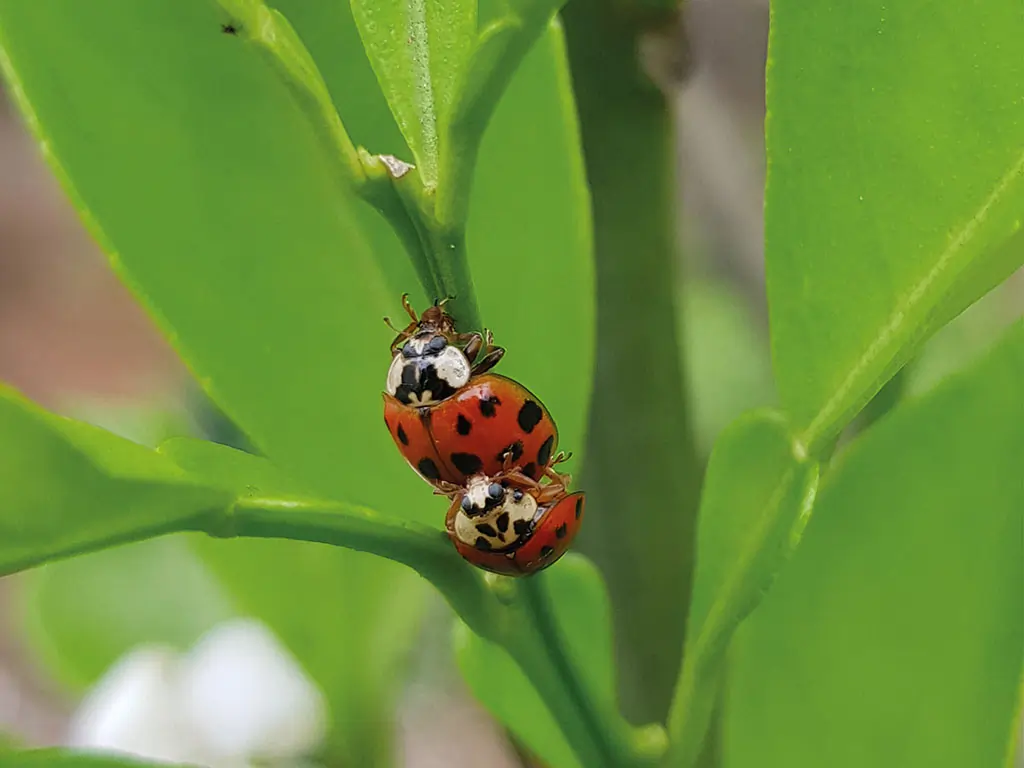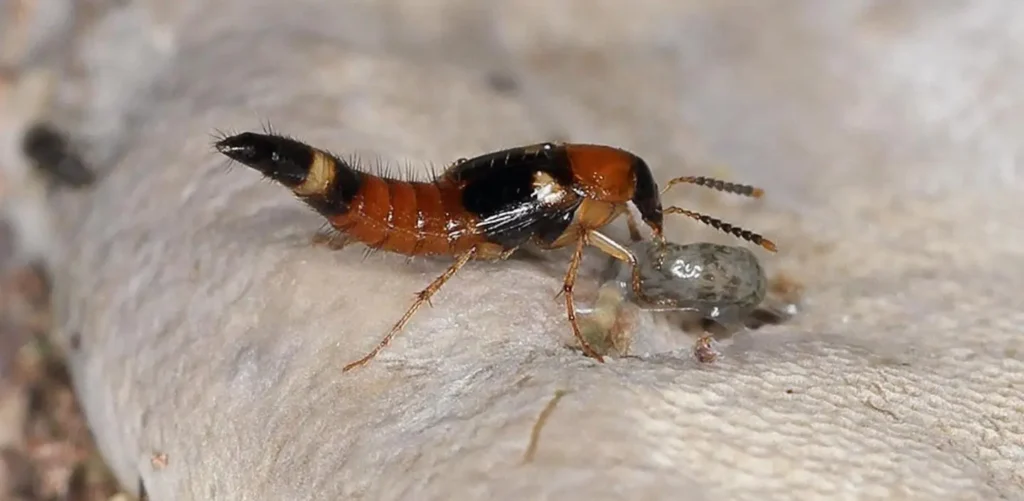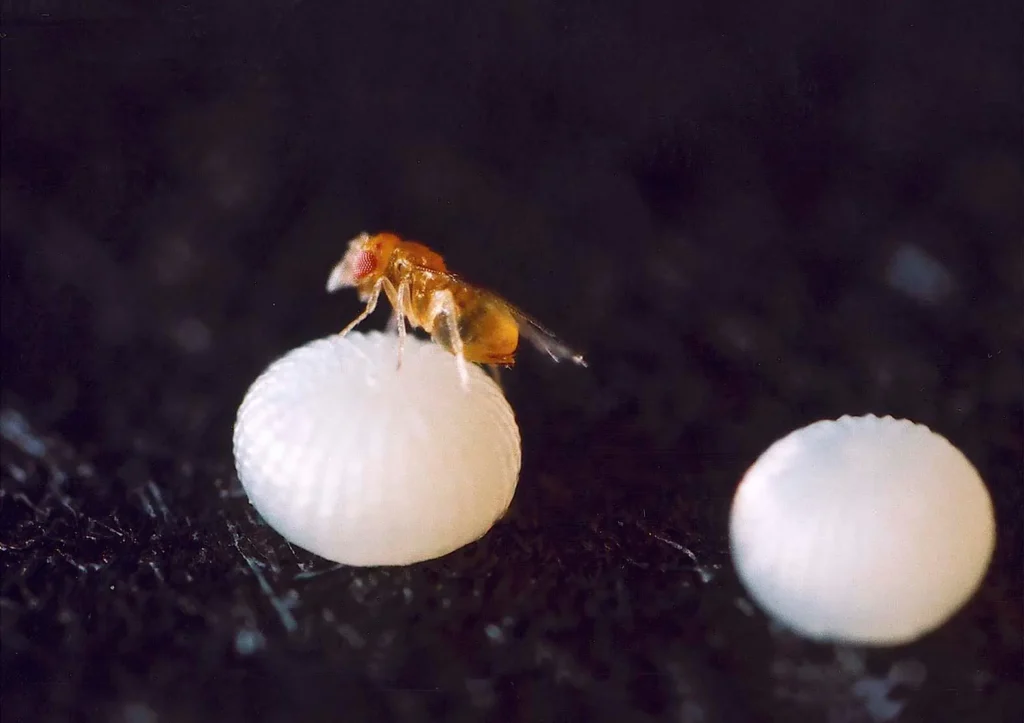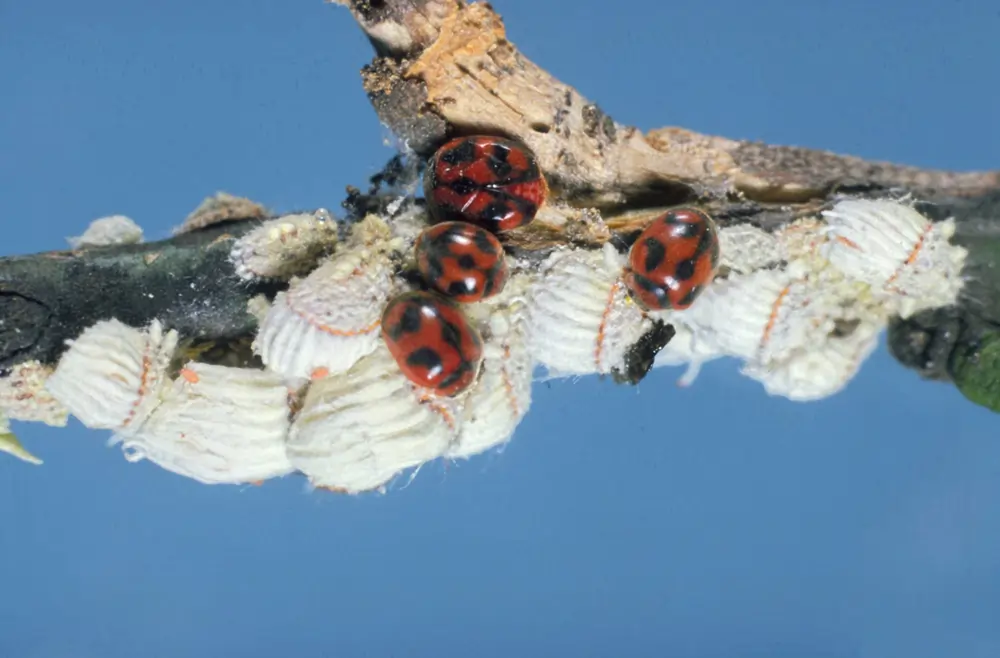Introduction
Imagine a world where crops thrive without the heavy use of synthetic pesticides and ecosystems remain balanced naturally. This vision is becoming a reality through the innovative practice of biological pest control.
Biological control of pests is a sustainable pest management strategy that harnesses the power of natural predators, parasites, and pathogens to control harmful insect populations. This method reduces dependency on chemical pesticides and promotes ecological balance and biodiversity.
By understanding the Biological control of pests, we can appreciate its significance in modern agriculture and environmental conservation. This article delves into the various aspects of biological pest control, including its history, types, and methods. It explores its historical development, the agents involved, and successful case studies, ultimately highlighting its potential as a cornerstone for sustainable pest management.
Read also: Ecosystem | Definition, Components, and 5 Important Types of Ecosystem
The Importance of Sustainable Pest Management
The widespread use of chemical pesticides has raised alarms due to their potential to contaminate soil and water sources, disrupt the ecological balance, and pose risks to human health. Biological control of pests offers a sustainable solution that aligns with the principles of integrated pest management (IPM) by reducing reliance on these harmful chemicals. By promoting natural pest control mechanisms, biocontrol fosters a self-regulating ecosystem that can better withstand pest outbreaks over the long term.
Read also: Soil Pollution – A Hidden Threat to Civilization
Read also: 5 Extreme Causes of Water Pollution and its Hazardous Effects
Historical Overview of Biological Pest Control
The start of utilizing biological control of pests was introduced in the Egyptian era 4000 years ago. The utilization of insect parasitoids was recognized primarily in the 17th century. The initial record was found in Italy in 1602. By 1762, the first import of biological control happened, with the utilization of the mynah bird from India to Mauritian Island. Several articles appeared about the utilization of entomophagous insects associated with developing agriculture in the US using biological control.
Milestones in Biological Pest Control
- In 1888, implementing the Vedalia beetle in California to handle the cottony cushion scale marked one of the primary successful biological efforts to control it. However, in the 1920s, the development of the bacillus thuringiensis (Bt) as a microbial insecticide led to its spread in pest management.
- In addition 1950, classical biology techniques were implemented for managing pests in different agricultural systems. In 1980, advancements in genetic engineering were made to enhance the effectiveness of biological control of pests. Also, in the 2000s, there was a rising adoption of integrated pest management and a combination of biological control with sustainable practices.

Types of Biological Control Agents
Parasitoids
Parasitoids are organisms present in an organism that stay in the host’s body at the host’s expense, resulting in the host’s death. It is one of the six major strategies of parasitism, differentiated by a fatal prognosis for the host, making the strategy near predation. Parasitoids can be discovered anywhere among various taxa across the insect superorder, where complete metamorphosis may be adapted for a split lifestyle.
Parasitoids can be classified into two categories: endo and ecto parasitoids. Primary parasitoids have the simplest parasitic relationship involving two organisms, including the source and parasitoid.

Parasitoids are crucial in controlling pests by targeting and killing insects and pests. They lay their eggs on the host pest and develop larvae that eat the host, killing it. This technique declines pest populations, is environment-friendly, and aims only at the pest without harming beneficial organisms that contribute to sustainable agriculture and ecological balance.
Pathogens
Pathogens are organisms that cause diseases. The various types of pathogens and the diseases they cause are very severe.
Various types of pathogens include Bacteria, viruses, and fungi. Bacteria are microscopic pathogens that can be produced quickly after entering the body and emit toxins to damage their tissues. However, not all bacteria are pathogenic because many harmless bacteria are crucial to our health.
Viruses are smaller than bacteria. They enter a host cell, replicate, and reproduce many viruses, infecting more host cells. Viruses can pass from one person to another.
Fungi are the main cause of human diseases. Common fungal infections that can be seen include athlete’s foot and ringworm. These conditions are contagious and can spread from one person to another.

Mechanism of Action
Pathogens consist of bacteria, fungi, and viruses that infect the pest and cause diseases and death. They enter the host’s body, reproduce, and alter physiological operations. This reduces the pest population and provides a natural and effective method of sustainable pest control.
Methods of Biological Pest Control
Classical Biological Control
The importation, also called biological pest control, involves the implementation of the pest’s natural enemies to a new locale where they do not survive naturally. To control a pest, biological control pest control needs a colonizing ability that keeps on changing according to the habitat of space and time. The population of Levuana luminosity, a crucial pest, a coconut pest in Fiji, was controlled by biological pest control.

An example of classical biological pest control includes the Vedalia beetle, which was implemented to control cottony cushion scale in California citrus orchards. Encarsia formosa, managed by whitefly populations in greenhouses and Cactoblastis cactorum, has been introduced to Australia to control invasive prickly pear cactus.
Read also: 10 Heartbreaking Stories of Endangered Species in California
Augmentative Biological Control
Augmentative biological control includes the emissions of natural enemies to control the set products. This initiative is mainly used when the existing natural enemies are not sufficiently effective for controlling pests properly. It consists of two main types: inundative release and inoculative release.
It is widely used in agricultural practices, horticulture, and greenhouse settings, mainly in environments where pests are quickly damaged.
One of the main examples of Trichogramma wasps for controlling crop caterpillar pests. These little parasitoids lay their eggs inside the eggs of pests to avoid hatching and causing damage. Regular releases like Trichogramma wrap are available in crops like corn, cotton, and vegetables.

Conservation Biological Control
- This mainly targets enhancing the effectiveness of natural enemies among natural enemies within the ecosystem, unlike biological control, which involves implementing new species and protecting the existing organisms.
- Conservation practices include covering crops, making them grow, and handling margins of the broad spectrum of pesticides.
- A practical example of the conservation of biological control in utilizing the flowering strips in agricultural landscapes. These attract many insects, ladybugs, and lacewings.

Advantages and Challenges of Biological Pest Control
Biological control of pests offers a compelling alternative to chemical pesticides. Harnessing nature’s mechanisms to manage pest populations, this eco-friendly approach presents a myriad of advantages while also posing unique challenges.
Advantages
Environmentally Friendly: Biological control significantly reduces the reliance on chemical pesticides, which can contaminate soil water and harm non-target organisms. Utilizing natural enemies, pathogens, or parasitoids minimizes ecological disruption and promotes biodiversity.
Cost-Effective: While initial implementation may require investment, biological control can prove remarkably cost-effective in the long run. Once established, natural enemies can provide sustained pest suppression, reducing the need for repeated pesticide applications.
Sustainable: Unlike chemical pesticides that can lead to pest resistance, biological control fosters a more balanced ecosystem. It encourages the natural regulation of pest populations, minimizing outbreaks and promoting long-term sustainability.
Challenges
Slower Results: Biological control often requires patience. Establishing effective populations of natural enemies can take time, and immediate pest control may not be achieved. This necessitates careful planning and integration with other pest management strategies.
Specificity: Biological control agents are typically highly specific to their target pests. This can be advantageous in minimizing non-target effects, but it also means that multiple agents may be needed to manage a pest complex.
Potential Risks: Although rare, there is a potential for non-target effects. In some cases, introduced biological control agents could impact native species or disrupt existing ecological relationships. Thorough risk assessment and careful monitoring are crucial.
Case Studies of Successful Biological Control
Despite these challenges, numerous success stories highlight the power of biological control. These examples underscore the potential of biological control to provide effective, sustainable, and environmentally friendly pest management solutions.

- The cottony cushion scale, a devastating pest of citrus, was controlled in California by introducing the vedalia beetle.
- Similarly, the parasitic wasp Encarsia formosa has been widely used to manage greenhouse whiteflies.
- Another biological control agent, the parasitic fly Cryptochaetum, influences the developing larva, indicating the importance of maintaining agricultural health.
Future of Biological Pest Control
Advancements in genetic research will implement an understanding of pests’ biology that results in biological pest control, which will keep on playing a central role in IPM strategies for interlinking biological methods for sustainable management of pet practices; the utilization of agricultural technologies, for instance, drones and remote sensing, will help improve the monitoring of biological control agents.
This aims to approach the efficiency and reduction of environmental impact. As the climate changes, the dynamics of pests and biological control of pests need to adapt. Researchers target searching for resilient biological control agents capable of thriving in changing environmental conditions. Growing public awareness drives demands for alternatives in biological pest control.
Conclusion
Biological Control of Pests represents a crucial advancement in sustainable pest management. By utilizing natural predators, parasites, and pathogens, this approach minimizes the reliance on chemical pesticides, fostering healthier ecosystems and promoting biodiversity. The historical development of Biological Control of Pests highlights its evolution and growing significance in modern agriculture.
Understanding the various types of biological control agents and their applications underscores the method’s versatility and effectiveness. Successful case studies further illustrate its potential to manage pests sustainably. As we look to the future, biological control of pests offers promising solutions to agricultural challenges, emphasizing the need for continued research and innovation.
By embracing this strategy, we can achieve a balanced coexistence between agriculture and the environment, ensuring food security and ecological health for future generations.
Call to action
Discover the power of nature in pest management! Explore the Biological Control of Pests and join the movement towards sustainable agriculture. Share this article, leave a comment, and take action today by supporting eco-friendly farming practices. Together, we can promote a healthier planet.
FAQs
1. What is Biological Control of Pests?
Biological Control of Pests involves using natural predators, parasites, and pathogens to manage pest populations. This eco-friendly initiative reduces the need for chemical pesticides, promoting ecological balance and sustainable agriculture. By leveraging the natural relationships between organisms, biological control helps maintain healthy ecosystems and supports biodiversity.
2. How does Biological Control of Pests differ from chemical pest control?
Unlike chemical pest control, which relies on synthetic substances to kill pests, Biological Control of Pests utilizes living organisms. This method is safer for the environment, non-target species, and human health. It also helps prevent the development of pesticide-resistant pests, offering a long-term and sustainable solution to pest management.
3. What are the types of biological control agents used in pest management?
Three main biological control agents exist: predators, parasitoids, and pathogens. Predators, such as ladybugs and spiders, eat pests. Parasitoids, like certain wasps, lay their eggs in or on pests, eventually killing them. Pathogens, including bacteria, fungi, and viruses, infect and kill pests, reducing their populations.
4. Can you provide examples of successful Biological Control of Pests?
One notable example is the parasitoid wasp Encarsia formosa, which controls whitefly populations in greenhouse crops. Another successful case is the introduction of the beetle Rodolia cardinalis to manage cottony cushion scale infestations in citrus orchards. These examples demonstrate the effectiveness and sustainability of biological control methods.
5. What are the benefits of Biological Control of Pests?
Biological Control of Pests offers numerous benefits, including reduced chemical pesticide use, enhanced environmental health, and preservation of beneficial organisms. It promotes biodiversity, reduces the risk of pesticide resistance, and supports sustainable agricultural practices. This approach also aligns with integrated pest management strategies, ensuring comprehensive and long-term pest control.
6. What challenges are associated with the Biological Control of Pests?
Challenges in the Biological Control of Pests include the need for thorough research to identify effective agents, potential non-target effects, and the requirement for ongoing monitoring and management. Additionally, the initial establishment of biological control agents can be time-consuming. However, this approach’s long-term benefits and sustainability often outweigh these challenges.
References
- Biological Control <History. (n.d.). Ucr.edu. Retrieved June 8, 2024, from http://www.faculty.ucr.edu/~legneref/biotact/bc-2.htm
- Bell, A. (2020, August 21). Pathogens: Definition, types, diseases, prevention, and more. Medicalnewstoday.com. https://www.medicalnewstoday.com/articles/pathogens-definition





